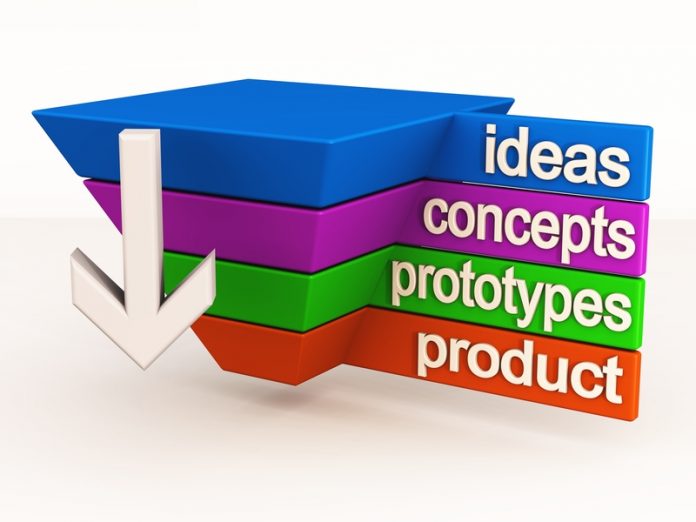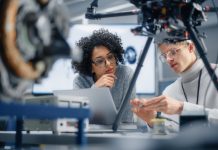Gunilla Silvard, KTH Royal Institute of Technology – Production and Engineering Management, discusses innovation in product realisation…
Individualisation and sustainability increase the demand for innovation concerning new materials, technologies and combined system solutions. This rises the needs for collaboration between various disciplines within an organisation, to coordinate perspectives, sharing information and experiences, and creating an understanding of the common system.
In the domain of developing production systems, the design of a good factory is typically distributed over many disciplines and organisations to cover all involved technologies (process, logistics, machinery etc.). Modelling and simulation of processes, layouts and workspaces is often used to support the design process within each of the disciplines, but these models typically represent different contexts and levels of detail and reside in different IT-systems using different formats and vocabulary.
One challenge is thus to interrelate various human perspectives, as well as digital models to get a common systems understanding. Our research addresses designing a digital factory framework for cross-disciplinary innovation, with principles, methods and technologies for building and using a digital factory, exemplified in one digital factory demonstrator.
The engineering innovation factory framework
One way of coordinating various disciplines is through an object which can interrelate the different perspectives, while accessing the details of each discipline. So the idea is to use the digital factory models as a common boundary object to support interdisciplinary design. Our framework is comprised of three parts: The digital factory demonstrator, the digital factory design system, and the work method. The design system and method rests upon principles for choosing and designing contents and visualisations depending on purpose and context.
Work method – using the digital factory
The digital factory innovation method is inspired by experiential learning, using learning as a means to gain an understanding of the system and its cause-effect relationships, necessary for problem solving. Further, through learning, the goal is to support innovation which occurs when people with different perspectives communicate and share ideas and experiences from their respective domains. A digital factory for learning should thus support explaining the structure and key qualities of the manufacturing system, as well as active experimentation through the visualisation and simulation of different choices.
It is important to capture the essence of production while hiding unnecessary complexity, and the following industrial challenges were selected together with industrial partners actively working in the automotive industry:
1. Ability to compare concepts considering cost, quality and productivity, both from the internal machine/station processing perspective and in the wider factory scope;
2. Ability to provide an intuitive understanding of the possibilities and risks with each alternative through modeling and visualisation, in addition to numerical KPIs given by calculations which are usually used;
3. Ability to design for logistics in the final assembly shop – for example balancing the required space for internal buffers with the frequency of supplying material;
4. Ability to adjust to fluctuations in the demand of volumes for different product variants in a factory – for example adapting to changed market demands;
5. Ability to adhere to ergonomics and safety regulations in layout design – for example making sure that there is enough space so the operators in the assembly shop do not step into the truck lane.
The block layout serves as one boundary object for discussion. It balances the concrete with the abstract, representing the factory on an abstract level with lack of detail in both process sequence, appearance and interconnections of equipment. Still it is concrete enough to provide a good view of the grouping and proportions of processes on the factory floor.
Design system – implementing the digital factory
The system for developing digital factories, DFDS, is based on a principle for designing models and systems according the context and needs in the work process. Focusing on required information and functionality, the digital factory models and simulations are mapped to different IT-systems. Our DFDS has a systems architecture with authoring applications for design and simulation coordinated through a common information backbone, currently implemented in the following applications:
A common and explicit manufacturing information model together with well-defined functionalities and interfaces facilitate the configuration of digital factories to the context of different companies. Further, it lays the ground for future service oriented system where independent applications can be plugged in “on the fly” to a common information backbone.
Digital factory demonstrator – the RCV digital factory
The digital factory RCV demonstrator is simplified to capture the essence of automotive production while hiding unnecessary complexity. It comprises models of the factory processes, equipment and layouts for different design stages from conceptual process planning to placement of the machinery in a detailed factory layout. In this digital factory, virtual manufacturing is performed in terms of 1) simulation of the machining processes for manufacturing the upright and 2) discrete event simulation for simulating the material flow in the assembly line.
The demonstrator concerns creating and using a digital factory for the design of a manufacturing system for a new type of research concept vehicle (RCV)
In the production scenario, the RCV should be produced with a total capacity of 90.000 vehicles per year, with 2 main variants. The production is divided into 3 factories: the manufacturing of the composite base plate; the machining of the wheel suspension upright – core component – and the final assembly of the whole vehicle. All other components and processes are out of scope and assumed to be purchased/sourced.
A simplified work process model for conceptual factory design serves as a framework for describing how an expert in the domain works: starting by determining the types, and sequence, of processes required to produce the product; then making a rough estimate of required resources and space for each process, estimating time and cost.
In the demonstrator, the block layout can be studied and discussed in a collaborative setting; then elaborated creating a new process plan which is analysed in more depth through the connection to the flow simulation. Details concerning cycle times and buffer sizes can be elaborated and results exported back to the block layout for visualisation and discussion. Thus the demonstrator supports the experimenting, reflecting and conceptualising of the experiential learning cycle.
Gunilla Silvard
KTH Royal Institute of Technology – Production and Engineering Management
gunilla@kth.se
https://www.kth.se/en/studies/master/production-engineering-management
Please note: this is a commercial profile











